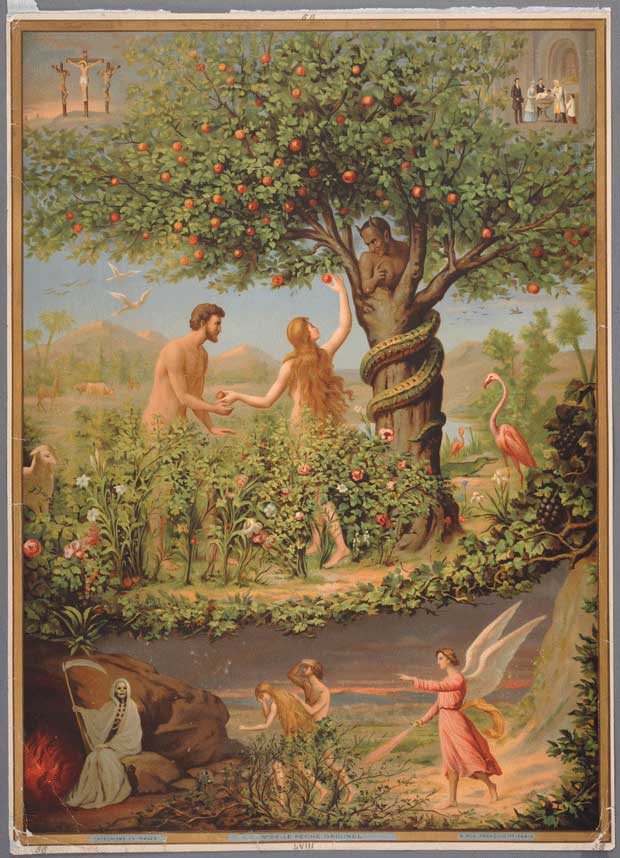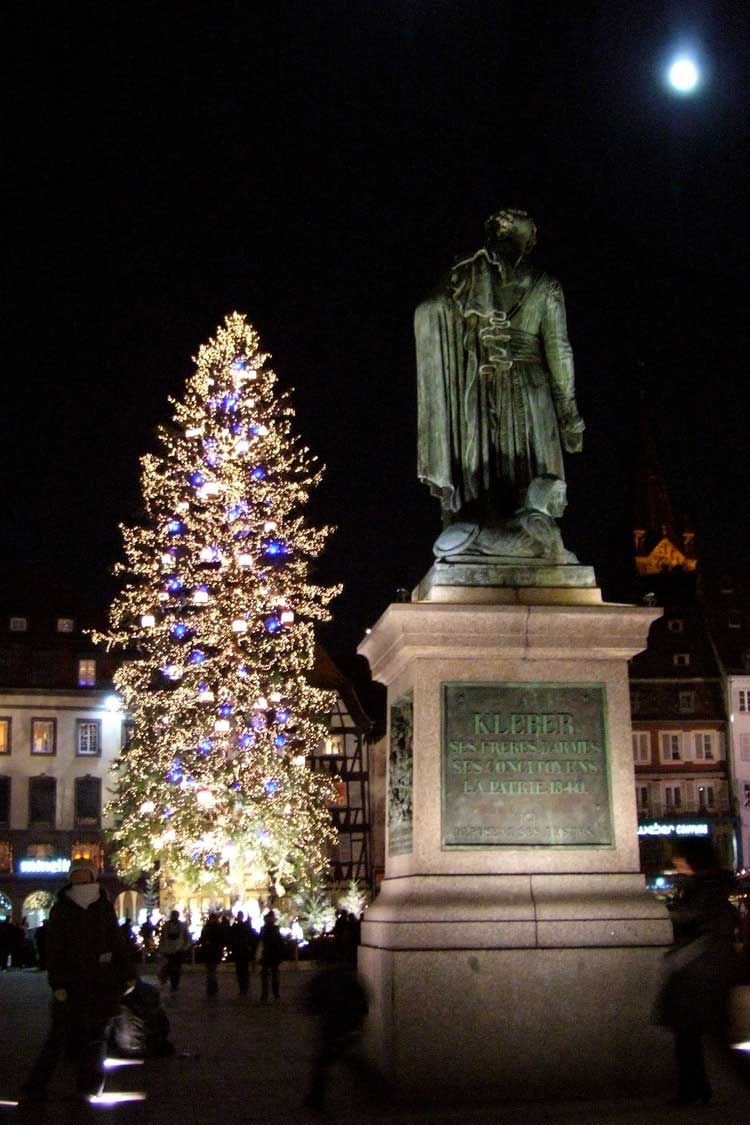The origins of the Christmas Tree
13th December 2018, by Gabriel
It is tall, it is beautiful and it is settled well, facing the General Kléber, having the place of honor in the heart of Strasbourg, trying from the top of its 30 meters to outshine the cathedral. And that old boy may be right to pine for it: he truly is a good competitor! Like he is every year, actually… But do you know where does the tradition of the fir tree come from ? Do you know its history ? Come on, have a seat, get comfy and you will get some new stories to tell while you eat the Yule log this year…
The “birth” of the tree
The origin of the Christmas tree goes back to very ancient times, some people even date it as far back as Ancient Egypt! But we will concentrate on a less risky origin, closer to us, documented and proved: the Celts (whose domain stretches over a large part of Europe in the 3rd century before our era).
The Celts would traditionally celebrate the rebirth of the sun (and by extension the start of a new life) upon the winter solstice. Each lunar month was represented by a tree, a symbol of fertility, and the month of december of course corresponded with the spruce, the tree of birth. So, that’s it: we have the birth of the tree… 😉 The Celts would decorate the spruce’s branches with fruits, flowers and wheat.
How the Christians cheated the Celts (and then cheated themselves)
The Church’s aim of course was to impose its belief by eradicating as much as possible the other beliefs, the “old ones”. They thus “arbitrarily” (not that much, but we’ll develop another time) chose the date of December 25th to celebrate the birth of Christ: that is, Christmas (in French: Noël, from natalis, natality). As a result, this is also a birth, isn’t it? Then everything is fine? Well, almost…
The power of the Church thus imposed itself by crushing little by little the old celtic traditions, from the 4th century of our era on. A millenium and a half later, it is clearly an undeniable success.
The plant itself was about to follow the same conversion: in the 12th century, it still represents natality, but it is the garden of Eden’s tree of life and it’s decorated with beautiful red apples.
In Germanic cultures, it can be found for Christmas from the 16th century onwards. The first written mention of a Christmas fir tree seems to happen in 1492 in Strasbourg! The Œuvre Notre-Dame ordered 9 resinous trees for the 9 parishes in Strasbourg in order to “welcome the new year”.
However, there is a reason the conifer went up the ladder in our regions at the time. A religious event greatly helped the sprout in its growth: the Reformation. In Strasbourg, in Alsace, in the protestant countries and cities of the time, we are getting rid of the statues, those of Jesus, the Virgin, the saints and other biblical characters. Of course, the Nativity scene with its small figurines follows the same path: out with it! Consequently, the pine branch becomes the new symbol of the festivities for the birth of Jesus.
Back then, the Alsatians are in truth not satisfied anymore with just a branch to decorate, they want the whole tree! They then decorate it with apples, candies and small cookies we call: bredele (!). Also, we have it hanging upside down from the ceiling, to protect it from rodents.
Nowadays, the king of the forests is not suspended anymore, it is well planted in its concrete pedestal, in the heart of the city, illuminating each of our guided tours… To get to know how the king of the forests ended up being present on all continents, check the world’s conquest by the Christmas tree.





